Andrews Government’s huge splurge in a bid to rebuild Victoria out of economic crisis
Victoria’s economic recovery is centred around “job creation”, but the Andrews government’s borrowing blitz will cost $23,000 for every man, woman and child.
Victoria
Don't miss out on the headlines from Victoria. Followed categories will be added to My News.
Victoria’s debt bill will be $23,000 for every man, woman and child after an Andrews government borrowing blitz to fast-track the state’s recovery out of the coronavirus crisis.
But even as debt spirals to $154.8bn by 2024, more than triple its current level, the state budget still represents a best-case scenario that hinges on the avoidance of new COVID-19 outbreaks and the gradual return of international students from the middle of next year.
The state government will rack up a $350 billion bill in a desperate bid to rebuild Victoria out of economic crisis.
The huge splurge will include almost $80 billion in infrastructure spending and almost $50 billion in new initiatives.
The record spend will see net debt soar to $154.8bn by 2023-24, or 28.9 per cent of the size of the state’s economy, more than double the government’s 12 per cent target.
Unveiling his sixth budget on Tuesday treasurer Tim Pallas outlined new jobs tax credits for business and up to 50 per cent stamp duty discounts for new homes under $1 million.
As well as already announced big builds on suburban rail loop, airport rail and Geelong fast rail, new funds will be pumped into the National Gallery of Victoria, schools, hospitals and trams.

But key data around the state’s major projects was omitted from the budget amid concerns many projects will be delayed or suffer massive cost blowouts.
Mr Pallas said all projects were in the process of being reviewed.
The Treasurer said the government was betting on a jobs led recovery to repair the economy and drive down soaring deficits.
“At the heart of our economic recovery must be job creation. It is deliberately ambitious,” Mr Pallas said.
“This is a budget that is built on jobs.”
“Generating growth in new and innovative industries, supporting our key workers is key to Victoria’s successful economic recovery.
“That’s why the government’s making significant investment to boost workforce participation and to support vulnerable workers.”
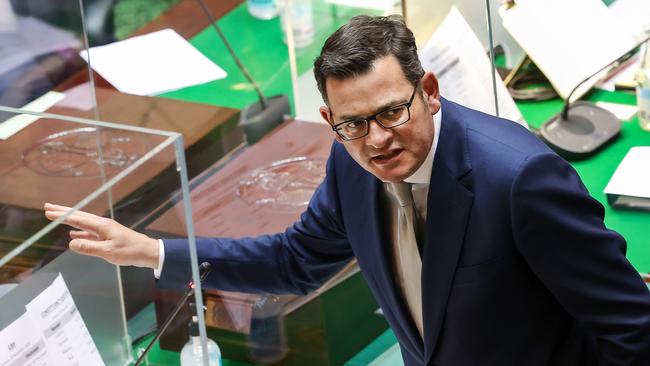
Mr Pallas said a Jobs Plan package, the centrepiece of the budget, aimed to create 400,000 new jobs by 2025.
It will be underpinned by a $619 million package including $250 million to subsidise the creation of 10,000 new jobs.
A $150 million support subsidy will directly target getting women back to work while the state’s TAFE sector would benefit from a $1 billion investment.
It comes amid government forecasts that the state’s unemployment rate has not yet reached its peak, with the rate expected to hit 8.25 per cent in the December quarter.
A $2 billion Breakthrough Victoria Fund will drive investment in new research innovation and create at least 15,000 new jobs.
YOUR FIVE-MINUTE GUIDE TO STATE BUDGET
A further $626 million will be spent on improving mobile coverage and broadband access in regional areas including $300 million to eradicate mobile blackspots.
The budget will be $23.3 billion in the red this year, but the government is banking on massive growth - and the avoidance of a third wave - to reduce the deficit to $5.9 billion by 2023-24.
Businesses which are charged payroll tax will be refunded 10 cents for every dollar they increase their taxable wages bill by rehiring staff, restoring hours or creating new jobs.
EYE-WATERING DEBT LEVEL

Victoria’s debt bill will skyrocket to $154.8bn over the next four years even as the Andrews government bets that it can avoid a third wave of COVID-19 and kickstart a rapid economic recovery.
Tim Pallas’s sixth state budget reveals the sea of red caused by the coronavirus crisis, with Victoria a whopping $23.3bn in deficit as the economy shrinks by 4 per cent this year after almost three decades of uninterrupted economic growth.
But the government is forecasting the economy to rally by a massive 7.75 per cent in 2021/22, despite the budget papers noting widespread uncertainty about the opening of borders, the timing of the COVID-19 vaccine, the level of consumer confidence and the unemployment rate, which is tipped to peak at 8.25 per cent by the end of this year.
And while Victoria’s disastrous second wave held back the nation’s economic recovery, the Treasurer still accused the commonwealth of short-changing the state, as the shrinking GST pool causes a massive $12.6bn hit to the budget bottom line over four years.
The budget papers also reveal Victoria’s public service wages bill has soared almost 10 per cent this year - and will blow out by $6bn over the next four years.
Mr Pallas defended the massive increase in borrowing, saying it had been recommended by the Reserve Bank and the federal government, and that interest charges - averaging 4.4 per cent of revenue a year - were manageable.
“Yes, there are short-term costs to the state’s financial position,” he said.
“But by using the strength of our balance sheet, we are able to protect the budgets of households and businesses across Victoria.”
“We are able to do it as a result of the government’s sound financial management over the past six years. We are putting our credit rating to work when it is needed most - to help Victorians now and into the future.”
“We are borrowing to make the necessary investments to drive a quicker and stronger recovery.”
Prior to the 2018 election, the state government revealed it would lift net debt to 12 per cent of gross state product, to fund the North East Link, the airport rail link and level crossing removals.
Net debt was tipped to reach $54.9bn in 2022/23, according to last year’s state budget, but it is already at $44.3bn and will double next year.
The state’s borrowings will reach $109.7bn in 2022 and $132.9bn in 2023, before reaching $154.8bn in 2024 - which is 28.9 per cent of gross state product.
While government spending will hit $90bn this year, the budget papers said it would taper “as the economy recovers”, even though it drops to $84.5bn in 2022/23 and then rises again to $87.4bn the year after.
The pre-COVID forecast of an annual economic growth rate of 2.75 per cent has been replaced by expectations of growth above 3 per cent in 2022/23 and 2023/24, even as population growth - the traditional driver of Victoria’s economic power - remains flat.
Mr Pallas said the predicted economic surge would be a “spring-back” from how health restrictions had suppressed spending this year.
The deficit is expected to be cut to $13bn next year, as one-off emergency spending ends, and then $5.9bn in four years.
While the government is promising to create 200,000 jobs in two years, the unemployment rate - which is currently 7.4 per cent - will remain well above pre-COVID levels, pegged at 5.75 per cent by 2023/24.
“The degree and persistence of scarring on the economy, which will affect the ability of the economy to recover, is unclear,” the budget papers said.
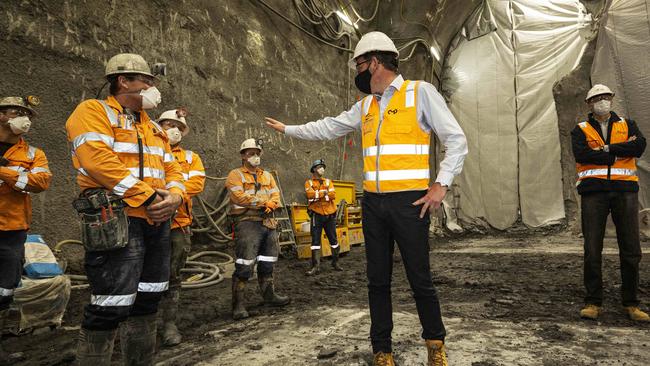
The government’s wage bill is expected to rise from more than $27bn in 2019/30 to $33.3 billion in 2023/24.
In 2014/15, the year the Andrews Government came into power, public sector expenses were $18.4 billion.
Employee expenses, including superannuation, are forecast to increase by an average of 3.4 per cent a year.
Increased services in health and education are behind the surge, along with payment increases and payouts linked to enterprise bargaining agreements.
In July, the Community and Public Sector Union locked in a wage deal that secured a 2 per cent annual pay rise and a “mobility allowance” ranging from $757 to $2815.
HEALTH
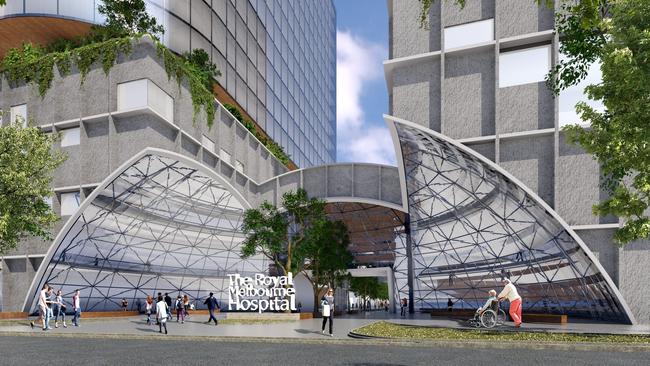
An extra 40,000 sick Victorians will be pushed through Victoria’s operating theatres over the next year in an effort to catch up coronavirus surgery delays.
The $300 million surgery elective blitz comes after more than 32,000 Victorians were denied their chance to get of the state’s waiting lists during the COVID-19 hospital shutdown, according to figures revealed in the Victorian Budget.
Longer-term initiatives include a roll out 10 new community hospitals in growth areas such as Cranbourne, Pakenham, Torquay, Whittlesea, Eltham, Point Cook and Melbourne’s inner south.
An initial $66 million is earmarked planning and land purchases this year, however the full cost of the community health expansion is not yet revealed.
The grassroots health building program comes as the Andrews Government also commits to the state’s largest ever hospital project - a multi-billion dollar redevelopment of the Royal Melbourne Hospital.
Plans revealed by the Herald Sun include the establishment of new RMH and Royal Women’s Hospitals in the Arden St Urban Renewal Project, which will allow services from the existing Parkville site to be relocated during its staged overhaul.
An initial $10 million was included in today’s budget to begin planning for the massive project.
Commitment for a new Melton Hospital have also been stepped up, with $75 million outlaid for the purchase of land and early works for the 24-hour hospital.
In regional Victoria, Warnnambool Base Hospital has been handed $384 million for the first stage of its redevelopment, which will see a new emergency department, operating theatres and acute inpatients delivered.
Maternity services in Wangaratta are being increased under a $7.6 million project.
A $200 million Metropolitan Health Infrastructure Fund has been established to fund upgrades across city and suburban health services. A matching pre-existing regional health infrastructure fund gained a $120 million boost, on top of $350 million previously contributed.
The massive hospital building pledge comes in the wake of a huge hit to health spending to cope with the coronavirus pandemic.
The state’s public health budget has spiralled more than 200 per cent since the start of the pandemic, jumping from about $390 million last year to $1.18 billion in 2020-21.
The pandemic’s impact is expected to last well into the next year, with facilities such as dedicated testing centres and emergency departments needed to immediately with the coronavirus set to remain open.
Nurses union boss Lisa Fitzpatrick said the focus on drug and alcohol services was much needed and also put pressure on the federal government to take action on nurse-patient ratios, especially in the aged care sector.
STAMP DUTY

Homebuyers will save tens of thousands of dollars when buying properties worth less than $1 million under a massive stamp duty discount to get the real estate market chugging along.
Treasurer Tim Pallas on Tuesday revealed the state government’s affordable housing initiative would be backed by an unprecedented waiver on property-related charges.
Until June 30 2021, Victorians who purchase new builds valued under $1 million will receive a half price discount on stamp duty up to $27,500.
Homebuyers will also be able to claim a 25 per cent saving, up to $13,750, for existing properties over the same period.
Mr Pallas said the decision to cap the payments at properties worth up to a million was about stimulating activity where it would be most effective.
He said it was also to help to get more people into affordable housing.
“Our aim is effectively to ensure we can do as much of the heavy lifting in the areas where the community needs the most assistance,” Mr Pallas said.
“There’s no doubt this industry is struggling … In no small part because of the social distancing arrangements that were necessarily in place.
“The aim here is to get as many people in that price bracket and below back into the housing market.”
In the June quarter, the median price of properties sold was $700,000 for houses and $570,000 for apartments.
Its expected properties under $1 million could make up more half of those sold while the scheme is in place.
In a further effort to stimulate the real estate market, a $500 million Victorian Homebuyer Fund will also provide equity to help more Victorians reduce the cost of their home deposits.
The state’s rental market will be given a boost from 2022 through a 50 per cent land tax discount for build-to-rent developments.
The discount will last until 2040 and is expected to boost Victoria’s housing supply by about 5000 new houses and apartments.
A revamp of the planning system will include $111 million to speed up the approval of projects, including affordable housing, make the process simpler.
More planning systems will move online, with councils given support to upgrade their own digital systems.
Property Council of Australia Victorian Interim Executive Director, Matthew Kandelaars, said the stamp duty waivers would have an immediate and positive effect for first home buyers, Victorian families and retirees.
“This targeted measure will pull forward economic activity and get development happening across the State - getting Victorians into work and into homes.”
SMALL BUSINESS

Small businesses will be able to cash in hundreds of millions of dollars in wage subsidies and tax credits if they take on new staff and increase hours for their workers in the wake of the coronavirus crisis.
Older women and young people will be particularly targeted for help, having been hit hard by the recession, in a series of new state government initiatives to create 200,000 jobs in two years.
The unprecedented focus on women was welcomed by Gender Equity CEO Tanya Kovac.
“This budget has shown what we knew, which was that women have been big losers from the COVID-19 pandemic.
“We have seen 109,000 jobs lost as a consequence of this ‘she-session.
“This budget makes those important first steps towards a gender equal recovery.”
However, Ms Kovac warned one budget cycle was not enough.
The government will also triple face-to-face support for the unemployed, with a $266m package that will see hundreds of mentors and counsellors hired to visit those struggling to find work and connect them with job and training opportunities.
Job seekers will even be able to access taxpayer-funded help to spruce up their resumes and buy new clothes for job interviews.
In a new wage subsidy scheme, the government will spend $250m to help businesses hire 10,000 workers over six months, with $150m set aside for women, a third of which will be aged over 45.
But Tim Pallas was unable to provide further details of the six-month subsidy, saying there was an “enormous amount of policy work that’s got to be done”.
The new jobs will be particularly targeted at those laid off during the pandemic and “identified in partnership with businesses and the community sector”.
The Treasurer said he wanted the scheme to be “underway as quickly as we can”, which could enable some businesses to double dip, cashing in from the state program as well as the federal government’s new hiring credit incentives.
Mr Pallas also promised that “safeguards” would be built in to prevent businesses laying off staff and then hiring new workers subsidised by the taxpayer.
After providing $1bn in payroll tax refunds and waivers during the pandemic, Mr Pallas also unveiled a new cashback program for small businesses which rehire workers, take on new staff or increase hours for their employees.
The support, worth $836m over two years, will deliver a 10 per cent credit for the total new wages added by businesses which are charged payroll tax.
It is expected to help 9400 people get back to work, and Mr Pallas said the credit could completely cover the cost of payroll tax for some employers.
Daniel Andrews said the $619.4m boost to the Jobs Victoria network was central to the state’s economic recovery.
“A job means a pay cheque - but it also means security and stability and a chance to build a life with those you love - and this pandemic has robbed too many Victorians of that opportunity,” the Premier said.
“With these investments we’ll help get more Victorians back into work, including those we know who’ve been impacted the most - young people, women and older Victorians”
Jobs Victoria will also roll out a new hotline to provide personalised advice to job seekers, along with an expanded online platform.
TRANSPORT
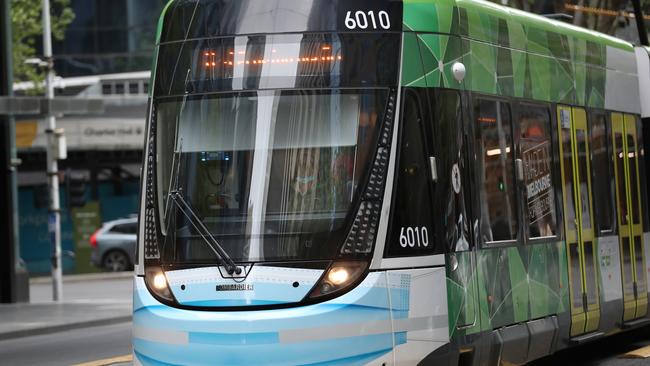
One hundred new trams for Melbourne and $10 billion for building and fixing road and rail across the state headline a massive new transport spend in the budget.
The new trams, set to cost $1.5bn, will enable an upgrade of the fleet from 2024, while many smaller-scale infrastructure projects are designed to be done quickly to stimulate the economy and secure jobs.
Big ticket transport items include $2.2bn for the Suburban Rail Loop, with budget papers showing about half of the money will be spent before June, 2022.
And money has also been set aside for the long-awaited Melbourne Airport Rail Link.
Total spending on transport infrastructure has skyrocketed as the Andrews Government tries to keep people in work and create a pipeline of projects across Victoria.
It is part of an incredible $134bn state capital program now underway or due to commence.
But any blowouts on existing infrastructure projects remain hidden, with Treasurer Tim Pallas saying bureaucrats had not been able to finalise capital program documents that usually accompany the Budget.
Transport Infrastructure Minister Jacinta Allan said “by building our state, we’re rebuilding economy – getting thousands of Victorians back in work and preparing our transport network for generations to come”.
A big upgrade to regional rail lines is part of the big build, which will see total infrastructure spending average almost $20bn a year for the next four years.
Shepparton and Warrnambool will share in $660m, while Geelong fast rail will become a reality through a $2bn state investment that matches federal funding.
The scale of the damage wreaked by the coronavirus pandemic on the public transport network has been laid bare, with more than $438m spent on cleaning trams, trains and buses and also paying for lost fare revenue.
Commuters have shifted to their cars as a result, meaning road taxes are still holding up.
The Next Generation tram project includes a new maintenance hub, and the government says it will support about 1900 manufacturing and supply chain jobs at the peak of production.
Public Transport Minister Ben Carroll said the project would boost the state’s advanced manufacturing capability and see workers develop skills in “cutting-edge transport technology”.
The 100-strong fleet will progressively replace ageing A and Z class trams with accessible services.
ARTS
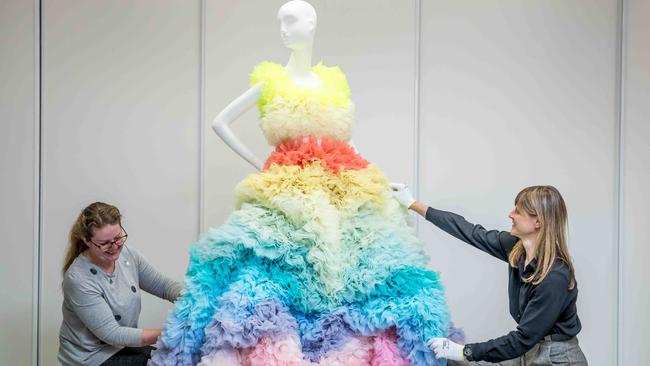
Australia’s biggest contemporary gallery will be built next to the NGV’s St Kilda Road headquarters as part of a $1.5 billion rejuvenation of our famous arts precinct.
In a move designed to attract an extra three million visitors a year, the new NGV Contemporary will create 5000 jobs during construction and an extra 18,000 sqm of new and renewed open space.
The massive spend, which Treasurer Tim Pallas said should enable major works to begin within two years, will create a new city-shaping gallery housed at 77 Southbank Boulevard.
The project is part of a revamp of the arts precinct that will help boost creative and tourism industries hammered during the pandemic.
Most of the initial spend will go towards the NGV Contemporary build, which the government says would pave the way for a second stage of the arts precinct masterplan – an expansion of Arts Centre Melbourne.
Premier Daniel Andrews said “we are Australia’s cultural capital” and the massive project will cement that position forever.
“The Melbourne Arts Precinct is a generational project that will bring people to our state and support jobs now and for decades to come,” he said.
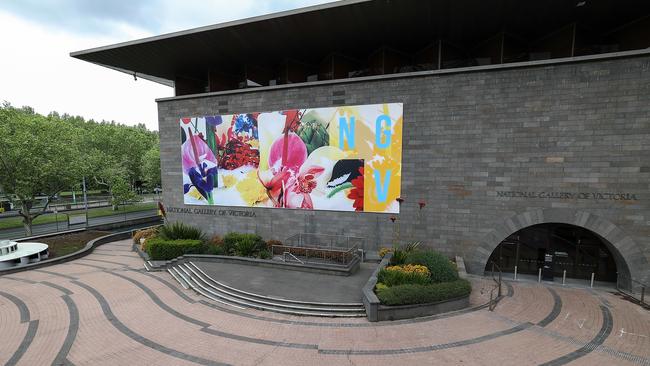
He said the amount of open space created, which will be around the new gallery and leading through to the Yarra River, would be the “equivalent to the MCG” in size, with space for live performances, public art, cafes and restaurants.
Creative Industries Minister Danny Pearson said $220m would also be spent supporting the screen industry and smaller galleries in suburbs and country areas to boost businesses and help aid recovery.
“As we recover from this pandemic, it makes sense that we play to our strengths,” he said.
“Our creative industries are the heart and soul of Victoria – and a major driver of our economy and jobs.”
Before the pandemic hit, the cultural tourism industry was worth about $2.5bn a year, and supported hundreds of thousands of jobs.
As well as 5000 jobs during construction, an extra 200 ongoing jobs will be created at the new contemporary gallery.
MENTAL HEALTH
120 additional acute mental health beds in Geelong, Epping, Sunshine and Melbourne
$152m to meet mental health impacts of COVID-19
$235m for new jobs in mental health, family violence and child protection sectors
The move to announce funding for kids in government care till the age of 21 years-of-age from 18 is being touted as one of the biggest changes, according to Home Stretch CEO Paul McDonald.
“Let’s make no bones about this, it is probably one of the most significant child welfare reforms in a generation in this country,” he said.
“Victoria, is the first to actually say all children can remain in their placement until 2.
“This is good for the community and good for these children.”
ATTRACTIONS AND TOURISM

$1.5b for new National Gallery of Victoria contemporary arts building
$23m Wilsons Promontory visitors centre
$84m upgrade to Werribee Zoo to host Asian elephant herd
$47.5m for Great Ocean Road improvements including walking trail from Fairhaven to Skenes Creek
$52m to upgrade metro and regional parks including Albert Park, Brimbank Park and Dandenong Ranges
$150m regional tourism investment fund to focus on arts and culture, food, wine
$58m to market Victoria to local and interstate travellers
120,000 vouchers of $200 for holiday-makers visiting regional Victoria to help with accommodation and other costs
Victorian Industry Tourism Council head Felicia Mariani said the investment across the tourism industry in regional Victoria was a big win and celebrated a focus on major events and the arts.
However, she said the focus on business tourism had been “undercooked” and may have impacts.
EDUCATION
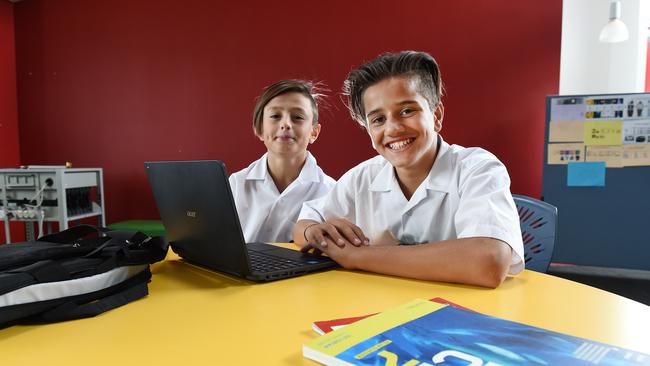
A landmark school upgrade program will hand $1.3 billion to more than 160 schools for new classrooms, gyms and learning areas.
A total 123 mainstream campuses and 39 specialist schools will get funding for construction, with every project to begin within 16 months.
Lalor Secondary is the biggest winner, receiving $26.2 million, followed by Exford Primary with $25.3 and Footscray High’s Kinnear Campus with $25m
A massive $3 billion school building and upgrades program – including $1.9 billion revealed in the budget and $1.1 billion previously announced in the Building Works Package – dwarfs last year’s $1.82 billion in total capital programs, then described as the biggest school infrastructure program in the state’s history.
Land for 11 new schools will be purchased in growth corridors Cardina, Casey, Hume, Melbourne, Melton and Wyndham.
Just one new school was unveiled in the budget – a vertical North Melbourne Hill Primary which will be complete by 2023.
However, 10 new schools were announced earlier this year.
It’s understood the Victorian Government is ahead in its schools blitz election commitment, to build 100 new schools by 2026.
$107m for Chisholm Institute and Melbourne Polytechnic and four new course added to Free TAFE
$38m to expand early childhood services and make them more inclusive
$1.6bn for school disability support
$774m for early childhood education, including free Kinder in 2021
$250m for tutors for one in five students
LAW AND ORDER
Victorians called into court may never have to step into the building again.
Almost $5 million will be spent moving the Magistrates’ Court online in a bid to smash a backlog of hearings.
A new Online Courts Pilot will aim to move as many matters as possible to virtual settings, in a massive shift inspired by the pandemic.
The Victorian Civil and Administrative Tribunal will also switch online with a $9.9 million one-off spend to transform civil hearings.
A new $272 million court headquarters for Melbourne’s west will be built at Wyndham, with plans to integrate it with the Wyndham police station for a new justice precinct.
SPORT
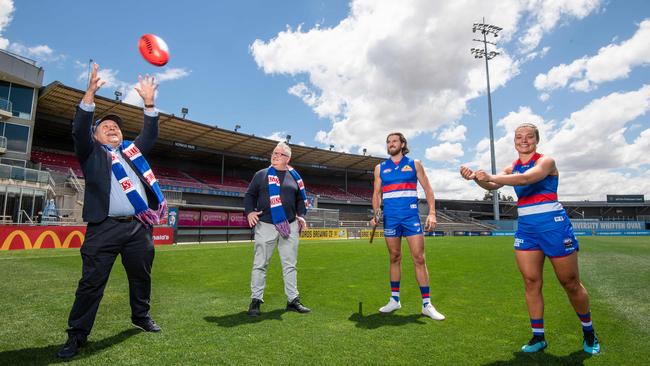
$40m for stage five of Kardinia Park
$36.6m to upgrade Whitten Oval
$15.5m to upgrade Richmond Football Club facilities
ENVIRONMENT
$655m to protect vulnerable wilderness and restore environment after bushfires
$224m to improve health of rivers, creeks and other waterways
$92.3m program to restore land and plant four million trees across 600,000ha
TAXES, FEES AND FINES
11.3% drop in state tax revenue, expected to record a massive bounce back by 2021-21 and grow by almost $7 billion by 2023-24
3.9% average annual increase in income from motor vehicle taxes. A freeze on rego payments will not continue next year
$911m in fine revenue by 2021/22, with income from speed cameras, toll road evasion and on-the-spot fines $172m lower in 2019/20 than forecast because of the pandemic.




